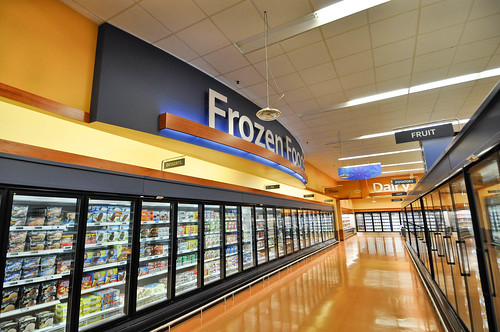Over the weekend I connected a tank of the refrigerant R-290 to my gas grill, fired it up, and had some delicious fresh grilled Vermont sweet corn on the cob. Very tasty.
While the tank connected to the grill was actually labeled Propane and not R-290, they are one in the same--the refrigerant with this ASHRAE identification IS propane, or C3H8. While the physical properties of propane make it a great refrigerant from a performance standpoint , the attributes which make it perfect for grilling (flammability) have largely kept it out of the the US HVAC&R market, though things are beginning to slowly change.
Ozone Depletion and Global Warming Potential
Propane is one of several naturally derived compounds which have potential use as refrigerants with both low ozone depletion potential (ODP) and lower global warming potential (GWP). In 1989, the Montreal Protocol treaty banned the use of Chlorofluorocarbons (CFCs) and Hydrochlorofluorocarbons (HCFCs), which are refrigerants with potent negative effects on the global ozone layer. In response to the ban on CFCs and HCFCs, a new set of refrigerants has been implemented--in place of R-12, R-22 and R-502, new Hydrofluorocarbon (HFC) refrigerants are now in use including R-134a, R-410a and R-404a.
While this new class of Hydrofluorocarbon refrigerants have little to no impact on the earth’s ozone layer, they do act as potent greenhouse gasses, sometimes thousands of times more potent than CO2. For example, according to a Greenpeace report, “HFC 134a, the most abundant HFC in use today, is 3,830 times more powerful than CO2 as a greenhouse gas over a 20-year period.”1 As a result of their global warming potency, all so called F-gasses (HCFCs CFSs, HFCs) have been scheduled to be phased out under the Kyoto Protocol treaty, which the United States has (embarrassingly) not yet ratified.
Naturally Derived Refrigerants
While the chemical industry has worked to develop a new, fourth generation class of refrigerants--most notably, Hydrofluorolefins (HFOs)--much of the world has turned its focus to naturally-derived refrigerants as a safer bet for the future. These refrigerants largely consist of compounds which have been used in the past as refrigerants, which then fell out of favor when the synthesized gasses were developed.
Carbon Dioxide
Carbon dioxide is a very effective refrigerant, and when derived from existing sources (for example captured from powerplant CO2 emissions or the atmosphere) it is renewable in the quantities required by refrigeration equipment. CO2 has seen a growing market overseas, and in some application in the US--most notably, supermarket refrigeration systems. One downside of CO2 is that it requires the system to operate at high pressures, resulting in the need for more rugged piping and compressor equipment--ultimately leading to higher first costs. While at high concentrations CO2 is an asphyxiant (as are nearly all refrigerants), it is otherwise a low toxicity option. ASHRAE indicates in its position paper on Natural Refrigerants that CO2 may be a good option for automotive/transit air conditioning.2
Hydrocarbons: Propane, Isobutane, Methane
Hydrocarbons offer a wide range of boiling points for a variety of refrigeration applications (low through higher temp), however these have the safety (and marketing) challenge of being explosive in certain situations. These risks are being mitigated when possible and industrial and some commercial applications are being explored in the US. Notably, Ben and Jerry’s parent company Unilever has deployed frozen ice cream product display cases domestically for several years now which utilize a hydrocarbon refrigerant. In Europe, Propane has made inroads into the residential market in heat pump market. Hydrocarbons do have a somewhat higher greenhouse gas potency than CO2, but are still vast improvements over CFC/HCFC/HFC products. In December of 2011 the US EPA approved the more general use of HC refrigerants in commercial and household applications3.
Ammonia
Ammonia was one of the earliest refrigerants used and has been in use continually in some markets (industrial, central plant) for over 150 years. Ammonia in certain concentrations can be toxic to humans and other animals, but the gas has a pungent odor which is easily detectable by smell at very low concentrations. One disadvantage of ammonia is that it cannot be used with copper tubing and components.
Water
The absorption refrigeration cycle uses water (R-718) as a refrigerant and some kind of desiccant as the working medium--often lithium bromide. This approach is not new, but absorption refrigeration continues to expand into more markets, especially when coupled with waste heat in combined heat and power applications (CHP). The COP of absorption refrigeration systems is not high, but when otherwise wasted heat is available, they can be cost effective units.
Conclusion
While the current lineup of synthetic refrigerants is a great improvement from an environmental standpoint over the previous generation of HCFCs and CFSs, the global warming impacts of the HFCs are very significant. If current trends continue into the future, it appears that what were once considered “old” refrigerants may see new life in an attempt to mitigate global warming impacts.
Sources:
1 HFCs: A Growing Threat to The Climate, http://www.greenpeace.org/international/en/publications/reports/hfcs-a-growing-threat-to-the-climate/, 2009 Updated Version.
2 ASHRAE Position Document, Natural Refrigerants, http://www.ashrae.org/File%20Library/docLib/About%20Us/PositionDocuments/ASHRAE_PD_Natural_Refrigerants_2011.pdf
3 EPA Press Relase Approving 3 New Refrigeratnts, December 14, 2011, http://yosemite.epa.gov/opa/admpress.nsf/0/EED8A9F289E19D3F85257966005DBF51
Other Resources
ASHRAE Position Paper on Natural Refrigerants
http://www.ashrae.org/File%20Library/docLib/About%20Us/PositionDocuments/ASHRAE_PD_Natural_Refrigerants_2011.pdf
Greenpeace F-Gas
http://www.greenpeace.org/international/en/campaigns/climate-change/solutions/natural-refrigerants/
Cal Chamber CARB
http://www.calchamber.com/headlines/pages/greenhousegasemissionrequirementforrefrigerantstotakeeffectjanuary.aspx
Refrigerants Naturally!
http://www.refrigerantsnaturally.com/




